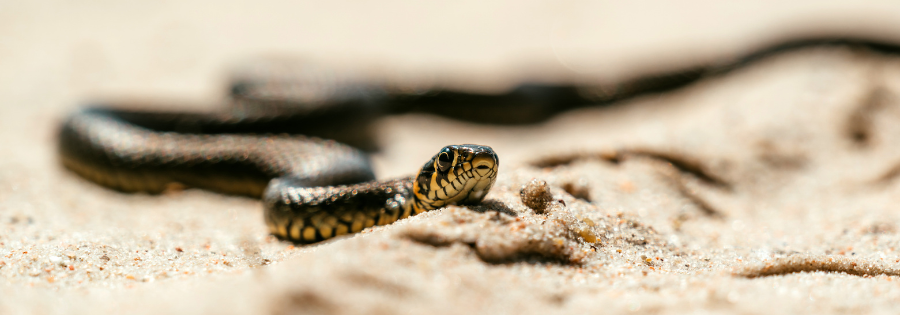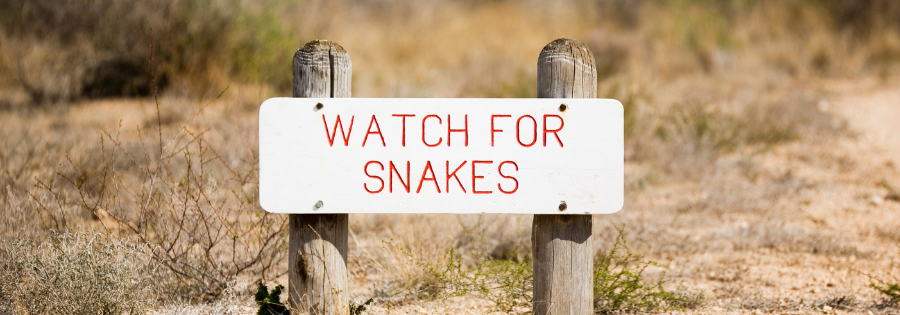Your crew is out in the field, working in tall grass or near brush piles, when someone suddenly spots a snake. In that moment, does your team know what to do? Texas job sites (like construction, oilfields, utilities, landscaping, etc.) often bring workers into contact with snakes. A single bite can lead to serious injury and lost work time. Fortunately, snake safety training gives crews the tools they need to work safely in snake-prone areas.
Why Snakes Are a Workplace Hazard
Snakes are a natural part of Texas landscapes. Construction zones, pipeline work, rural developments, and agricultural sites are all environments where encounters happen often. During warmer months, activity spikes as snakes move more. Reports show thousands of venomous snakebites each year in the U.S., many involving outdoor workers. Learning the risks is the first step toward reducing them.
What Training Includes
Snake safety training is designed to prepare crews for the unexpected. It includes:
- How to tell venomous snakes from harmless ones
- Safe behavior when a snake is spotted on-site
- Proper use of boots, gloves, other protective gear
- First-aid steps if a bite occurs
- Emergency response protocols and when to seek medical attention
OSHA Snake Safety Guidelines
While OSHA does not have a regulation written specifically for snakes, employers are required to provide a safe workplace under the General Duty Clause. That includes protecting workers from wildlife hazards.
OSHA guidance highlights the need for training employees on site-specific risks, maintaining stocked first-aid kits, and having medical response plans ready. Adding snake awareness into hazard communication programs is part of building a safer work environment.

Common Venomous Snakes in Texas
Workers in Texas may encounter several venomous species:
- Western Diamondback Rattlesnake: widespread, often found in brush or rocky areas
- Timber Rattlesnake: prefers wooded or rural regions
- Copperhead: common in wooded areas and near water
- Cottonmouth (Water Moccasin): frequently seen near ponds, rivers, and wetlands
- Coral Snake: small but highly venomous, recognized by its red, yellow, and black banding
Preventive Measures on Job Sites
Reducing the chance of an encounter starts with the environment. Keep grass and weeds trimmed, clear piles of debris, and store materials off the ground. Mark areas where snakes may hide, such as rock piles or tall brush. Encourage workers to use flashlights when moving around before sunrise or after dark.
First-Aid Kit Checklist for Snake Bites
A job site first-aid kit should always include items for treating snakebites, such as:
- Sterile dressings and bandages
- Splints to help immobilize the limb
- Antiseptic wipes
- A marker to note bite time and track swelling
- Communication equipment to call emergency services quickly
While professional medical care is always needed, being prepared can stabilize the situation until help arrives.
Snake Safety Myths vs. Facts
Myth: Cut and suck out the venom.
Fact: This is ineffective and harmful. Seek medical help immediately.
Myth: All snakes are dangerous.
Fact: Only a small portion are venomous, but caution is always smart.
Myth: Tourniquets stop venom spread.
Fact: Tourniquets can cause tissue damage and should not be used.
Clearing up myths prevents workers from making poor decisions during emergencies.

When Snakes Are Most Active
Snake activity peaks in spring and summer when temperatures rise. In fall, snakes may be more active during the day as they seek warmth. Winter activity slows but does not always stop in milder climates.
Expert Tip: Training should be refreshed during high-activity seasons so crews remain alert.
Crew Communication Tips
Communication can make the difference between panic and a calm response. Encourage workers to:
- Report sightings immediately to supervisors
- Avoid startling others with sudden movements
- Stay in groups when working in remote areas
- Use radios or phones to alert crews across large job sites
What’s in it for Your Team
Crews who know what to do are less likely to panic, reducing the chance of mistakes. Companies that invest in safety training see reduced workplace injuries, less downtime, and lower medical costs. Most importantly, it shows workers that their safety is a top priority.
So, Does Your Crew Need Training?
- Your team works in brush, tall grass, or rural environments.
- Snakes have been spotted on or near your job sites.
- Workers express uncertainty about how to respond to a snake.
- Your crew does not have a clear emergency response plan for snakebites.
If any of these apply, training should be on your radar.
Adding snake training to your safety program couldn’t be easier. Partner with safety consultants who know Texas job sites. You could start by adding snake safety awareness in existing safety meetings (Tip: provide visual aids and hands-on demonstrations to reinforce safe practices). Also be sure to schedule refresher sessions during peak snake activity months.
Safety by Design: Snake Safety Training in Texas
At Safety by Design, we offer third party safety consulting created for local industries. Snake safety is an investment in your people and your company’s future. Don’t wait until after an incident to act.
Contact Safety by Design today to schedule training and protect your team.



